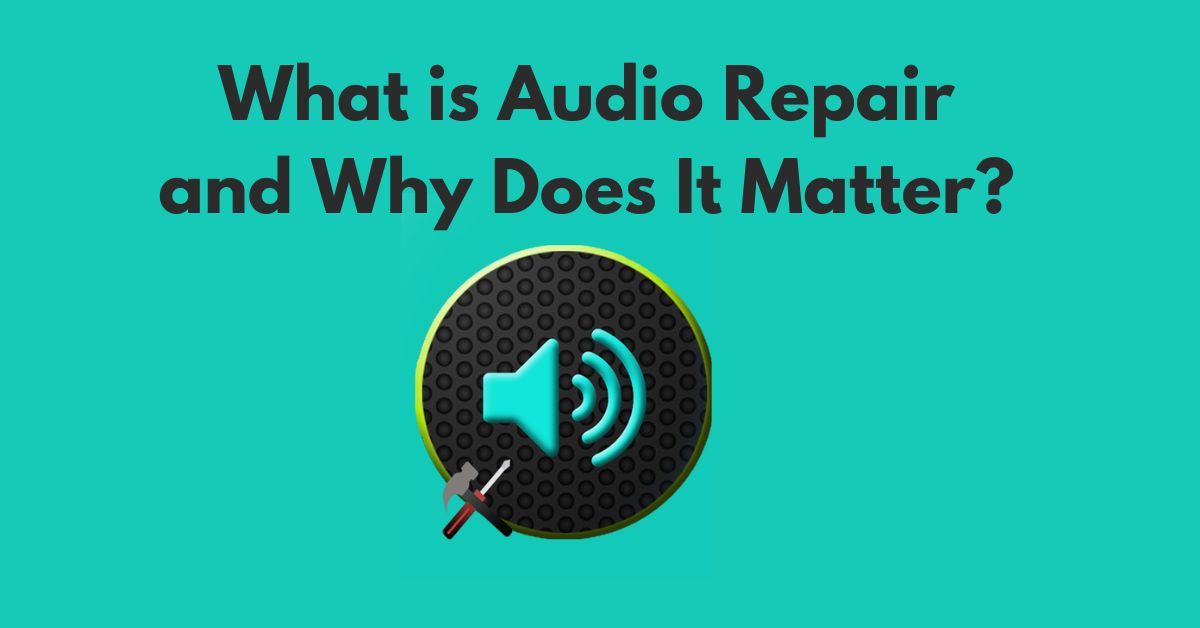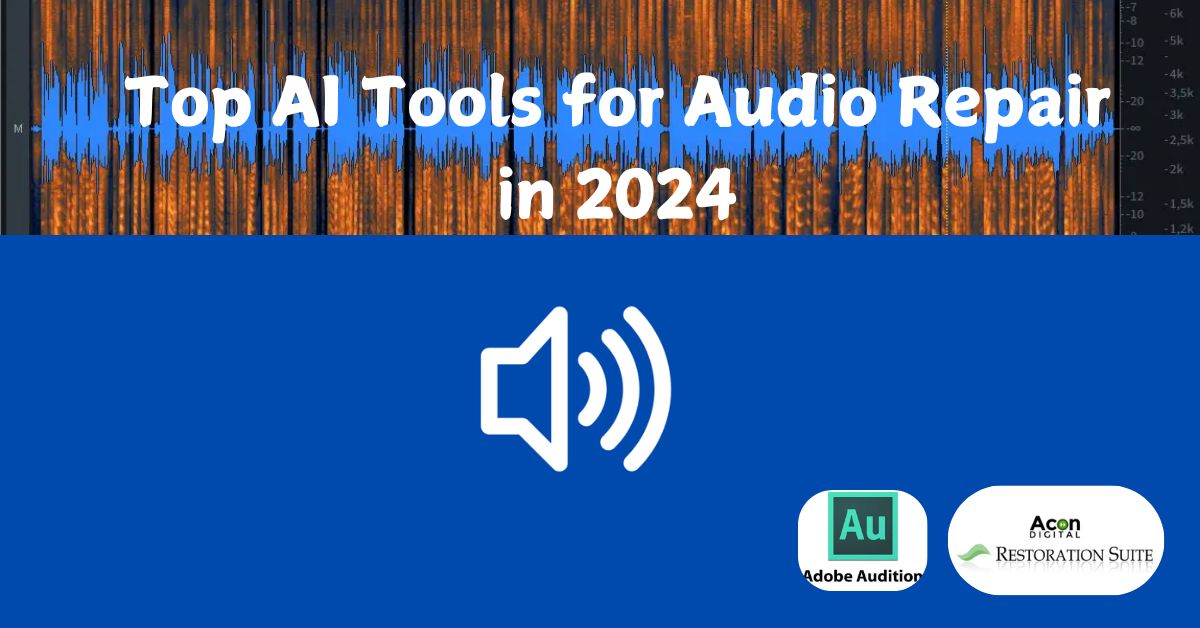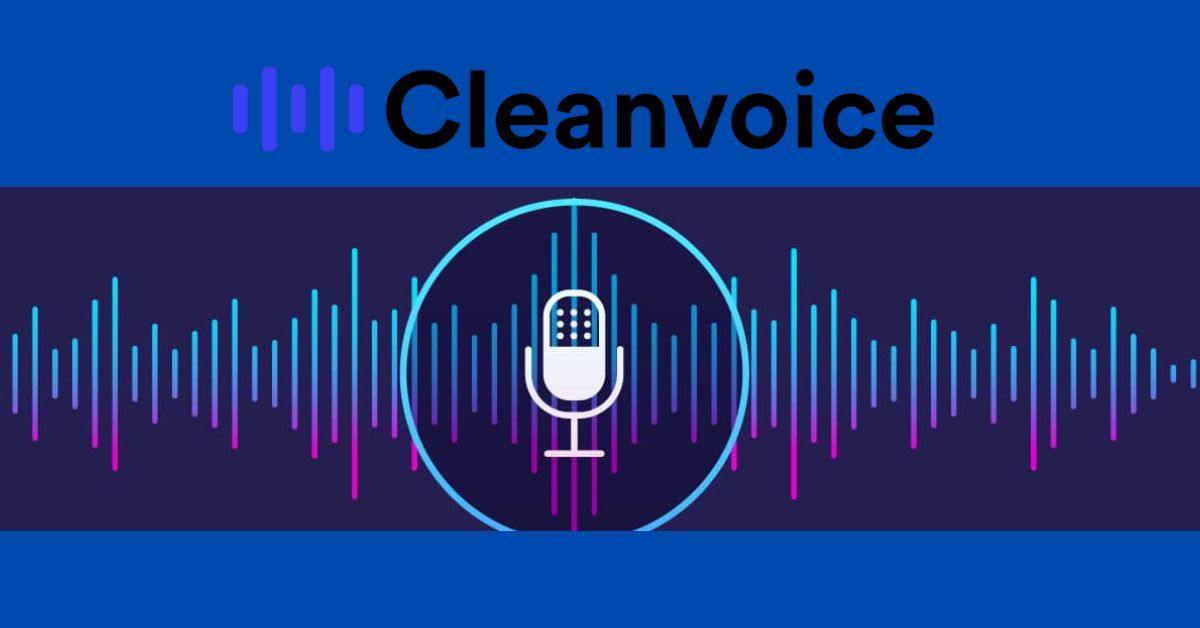Audio troubles can break an otherwise ideal recording, whether or not it’s a podcast episode, a track track, or an interview. Crackles, heritage noise, or audio distortion can feel like a nightmare to repair. But don’t fear—AI-powered equipment has revolutionized audio repair, making it easier than ever to repair pristine sound.
In this text, we’ll learn about the Best AI tools for audio repair, how they work, and what makes them stand out. Whether you’re a beginner or an audio professional, there’s something here for anybody.
What is Audio Repair and Why Does It Matter?

It’s no secret that easy audio could make or spoil the listening reveal. Audio repair refers to fixing troubles like history noise, clipping, distortion, and bad clarity in a valid recording. AI tools have stepped in to automate this complicated procedure, saving time and turning in expert-grade consequences.
The importance of audio repair spans industries:
- Podcasters need clear, professional-sounding recordings.
- Musicians rely on clean tracks to maintain their artistic quality.
- Content creators and videographers require polished sound to keep audiences engaged.
Using AI tools means you don’t need to be a sound engineer to achieve excellent results.
Top AI Tools for Audio Repair in 2024

1. iZotope RX 10
IZotope RX 10 is broadly regarded as the gold fashion in audio repair. Its AI-powered modules are distinctly intuitive, making it suitable for professionals and beginners.
Key Features:
- De-Noise: Removes unwanted hums, hisses, and ambient noise.
- De-Click: Eliminates clicks and pops in audio files.
- Spectral Repair: Allows you to visually isolate and fix specific sound issues.
Why It Stands Out: The interface is beginner-friendly but powerful enough for industry pros. It’s especially favored for its one-click solutions to clean up noise or distortion.
2. Acon Digital Restoration Suite
It is best for folks who need expert-quality restoration at an affordable charge. Acon Digital gives a set of equipment which include DeNoise, DeClip, DeHum, and DeClick.
Key Features:
- Real-Time Processing: Hear the changes instantly as you work.
- Broad Compatibility: Works seamlessly with major DAWs like Audacity and Adobe Audition.
Why It Stands Out: The real-time adjustments and intuitive sliders make this tool distinctly powerful without steep learning curves.
3. Adobe Audition’s Adaptive Noise Reduction
Adobe Audition has been a favorite in the audio editing community for years, and its AI-enhanced features take noise reduction to the next level.
Key Features:
- AI-Powered Auto Heal: Repairs problem areas in the waveform with minimal manual input.
- Dynamic Link with Video: Ideal for video creators who need synchronized audio editing.
Why It Stands Out: It’s part of Adobe’s Creative Cloud, so integration with tools like Premiere Pro is seamless.
4. Cedar Studio
Cedar Studio is a premium solution for broadcast-quality sound. While it’s on the pricier side, it’s known for its unparalleled precision in removing even the toughest noise issues.
Key Features:
- Dialogue Noise Suppressor: Great for cleaning up vocal recordings.
- Spectral Editing: Advanced tools to isolate and repair intricate audio problems.
Why It Stands Out: Professionals in film and TV often rely on Cedar Studio for flawless audio restoration.
5. Cleanvoice

Cleanvoice is a web-based AI tool designed specifically for podcasters and creators. It focuses on automating repetitive tasks like removing filler words or cleaning up background noise.
Key Features:
- Automatic Silence Removal: Speeds up the editing process.
- No Installation Required: Works directly in your browser.
Why It Stands Out: It’s fast, affordable, and highly accessible—perfect for podcasters on a budget.
How to Choose the Best AI Tool for Your Needs
The right tool depends on your specific goals. Ask yourself these questions:
- What’s your budget? Tools like iZotope RX 10 are feature-rich but pricier, while options like Cleanvoice are affordable and practical.
- What type of audio are you working with? Musicians may benefit from advanced spectral tools, while podcasters might prefer quick, automated fixes.
- Do you need integration? Adobe Audition is ideal if you already use Creative Cloud apps.
Step-by-Step Guide to Using AI Tools for Audio Repair
- Import Your Audio File: Start by uploading the problematic recording to your chosen tool.
- Identify the Issues: Use AI analysis or manually locate noise, clicks, or distortions.
- Apply AI Modules: Use features like de-noising, de-clicking, or spectral repair.
- Fine-tune the Output: Adjust settings for optimal results. Most tools allow real-time previews.
- Export the Cleaned Audio: Save your polished file in the desired format.
Key Takeaways
- AI tools for audio repair save time and effort, delivering professional results even for beginners.
- Choose a tool based on your budget, compatibility, and the type of audio you work with.
- iZotope RX 10 is best for comprehensive audio restoration, while Cleanvoice is great for podcasters.
- Always preview your edits to ensure the final output meets your expectations.
FAQs
What is the easiest AI tool for beginners?
Cleanvoice and Acon Digital Restoration Suite are user-friendly options with simple interfaces.
Can AI tools fix live recordings?
Yes, most tools can repair live recordings, but the extent of repair depends on the severity of the issues.
Are there free AI tools for audio repair?
Some tools, like Audacity (with plugins), offer basic noise reduction features for free, but advanced AI tools typically require a subscription.
Do I need technical skills to use these tools?
Not necessarily. Many tools have one-click options for common issues like noise and distortion.
Which AI tool is best for musicians?
iZotope RX 10 and Cedar Studio are ideal for high-quality music production.
Conclusion
The upward push of AI in audio repair has democratized sound editing, making it reachable to all of us from hobbyists to pro professionals. Whether you’re a podcaster trying to polish your episodes or a musician striving for ideal tracks, there’s an AI tool tailored to your desires.
Explore those options, try a few demos, and locate the device that fits your workflow. With the energy of AI, the best sound is only some clicks away.

